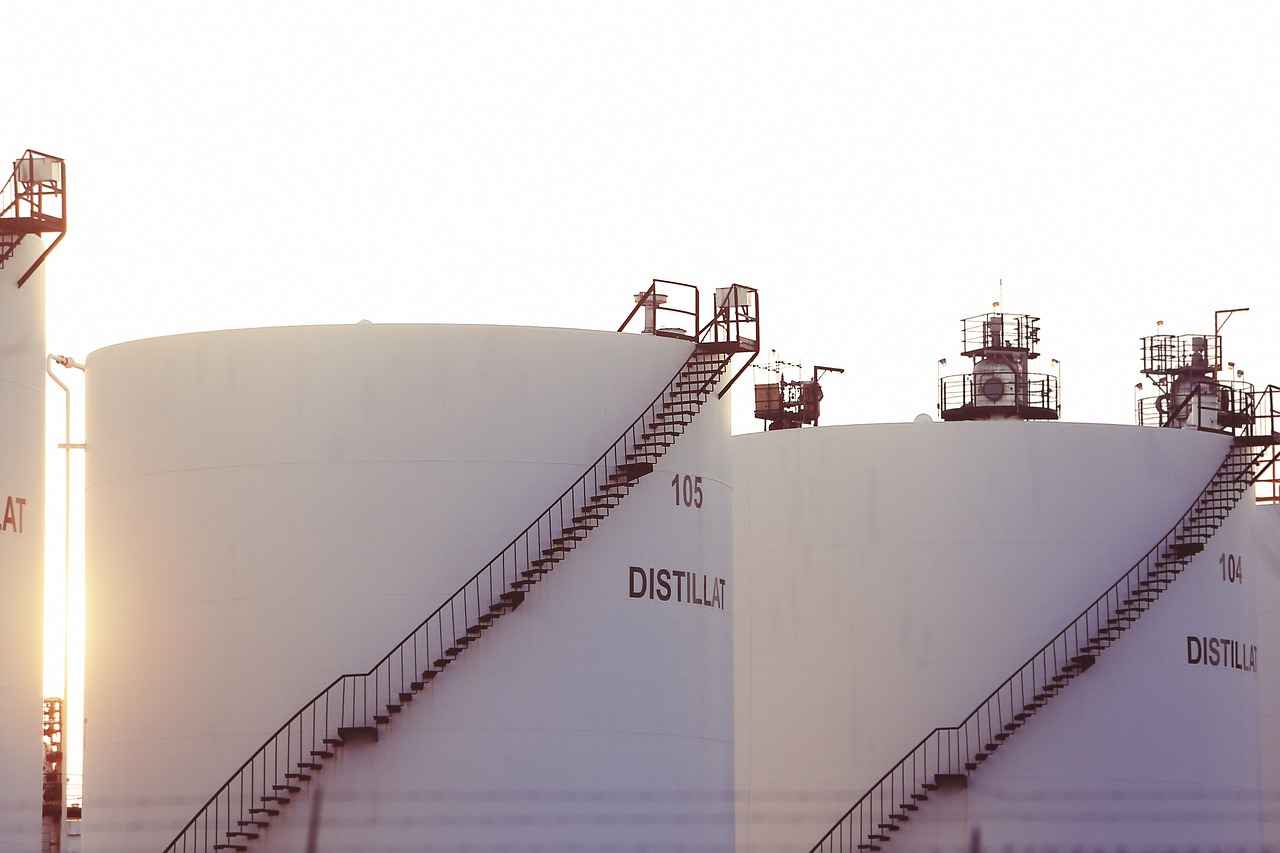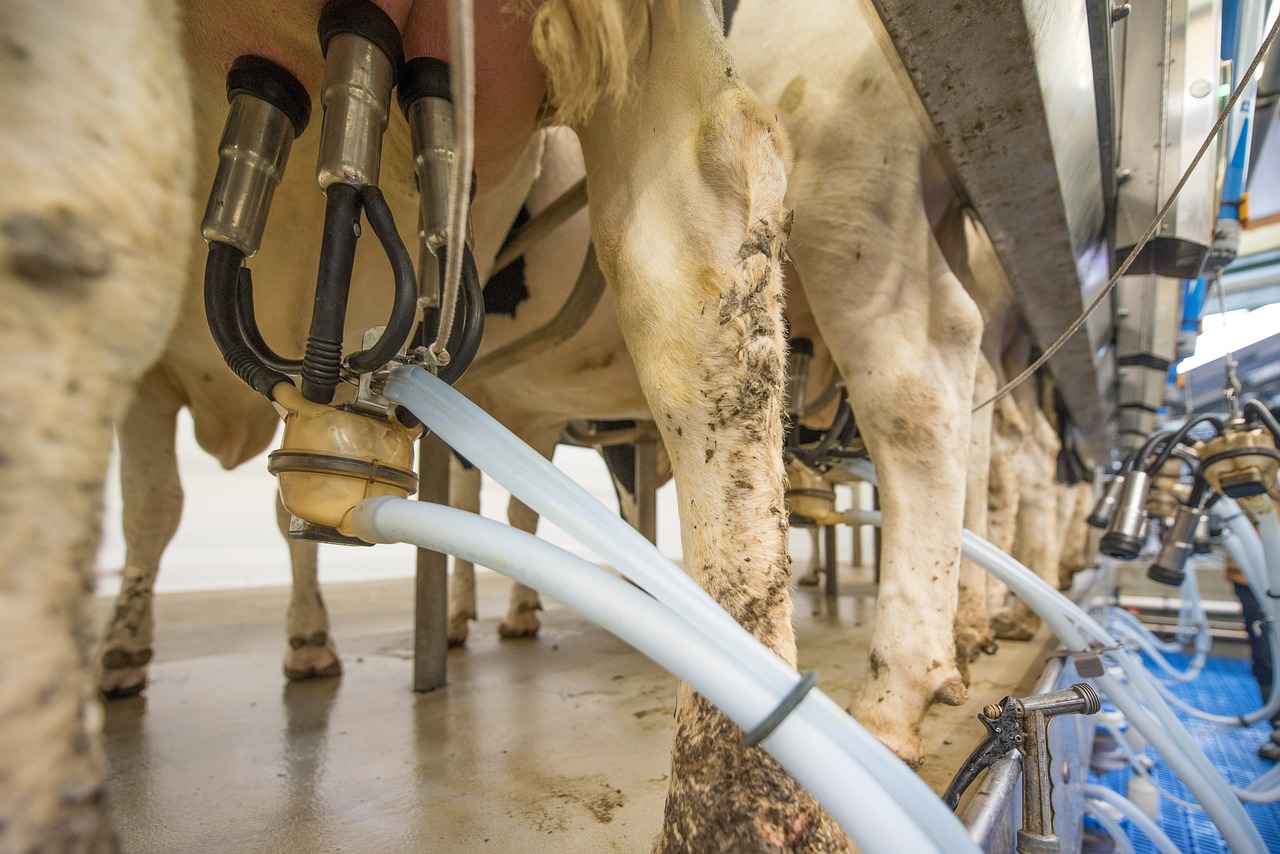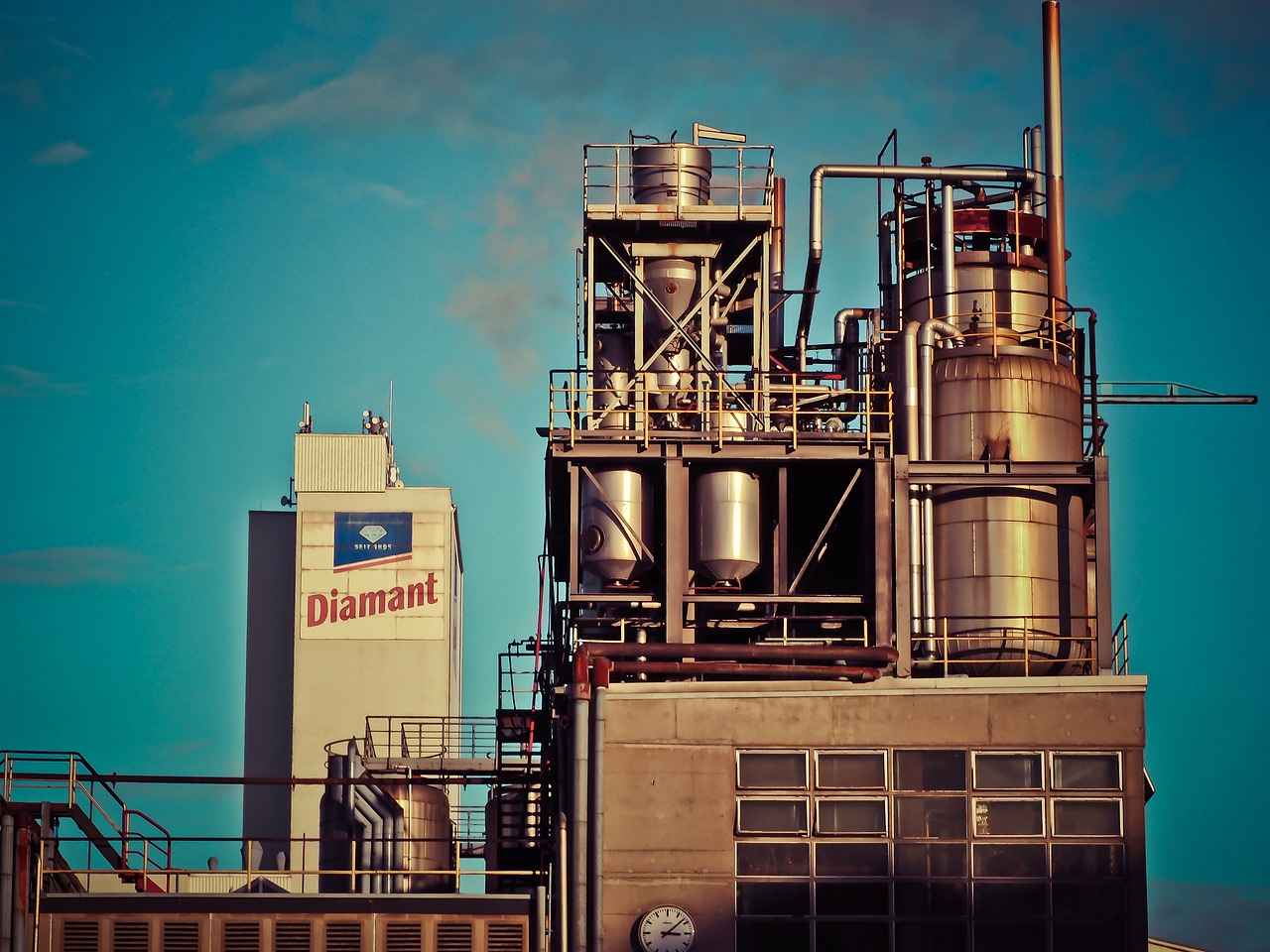The Honda Accord is one of the most popular midsize sedans globally, known for its reliability, performance, and innovative features. Understanding where these vehicles are manufactured offers insights into their quality and availability. This article delves into the various manufacturing locations of Honda Accords, highlighting the significance of each site and its impact on the overall production process.
Honda Accords are primarily produced in several key locations around the world, including:
- United States: The largest production facility is located in Marysville, Ohio, where Honda has been manufacturing Accords since 1982.
- Japan: The birthplace of the Accord, Japanese facilities focus on high-performance models and innovations.
- China: Honda operates joint ventures with local companies, catering to the growing demand in the Chinese market.
Honda employs a sophisticated global production strategy that ensures efficiency and quality. By distributing manufacturing across various countries, Honda can respond swiftly to market demands while leveraging local expertise. This strategy not only optimizes production costs but also enhances the overall quality of the vehicles.
The production of Honda Accords in the United States is particularly significant because it contributes substantially to the local economy. The Marysville plant is one of the largest Honda manufacturing facilities globally, employing thousands of workers and supporting numerous local suppliers. This presence bolsters Honda’s reputation for quality and reliability in the American market.
Japan remains a vital hub for Honda Accord production, emphasizing innovation and advanced manufacturing techniques. Japanese plants are known for producing specific models and high-performance variants, ensuring that Honda stays at the forefront of automotive technology.
Honda maintains rigorous quality control measures across its manufacturing sites. This includes standardized processes, regular audits, and a commitment to continuous improvement. Each Accord, regardless of where it is made, must meet Honda’s stringent quality standards before it reaches consumers.
Manufacturing in various countries allows Honda to:
- Reduce shipping costs by producing vehicles closer to key markets.
- Quickly adapt to changing market demands and consumer preferences.
- Leverage local resources and expertise, enhancing production efficiency.
Globalization has transformed Honda Accord production by enabling the company to access diverse markets and resources. This shift has led to innovations in design, production methods, and supply chain management, allowing Honda to remain competitive in a rapidly changing automotive landscape.
Despite its success, Honda faces several challenges in Accord manufacturing, including:
- Fluctuating labor costs: Variations in wages can impact production expenses.
- Trade regulations: Tariffs and trade agreements can affect supply chains.
- Supply chain disruptions: Natural disasters and global events can hinder production schedules.
Honda Accord manufacturing provides significant benefits to local economies, including:
- Job creation: Thousands of jobs are created directly and indirectly through Honda’s operations.
- Economic stimulation: Increased local investment leads to community development.
- Infrastructure improvements: Honda’s presence often drives enhancements in local infrastructure.
Honda is at the forefront of implementing innovations in Accord production. This includes the adoption of automation technologies and sustainable manufacturing practices aimed at improving efficiency and reducing environmental impact.
Honda is committed to addressing environmental concerns by adopting eco-friendly practices. This includes:
- Reducing waste and conserving energy in manufacturing processes.
- Utilizing sustainable materials wherever possible.
- Implementing recycling programs within production facilities.

What Are the Primary Manufacturing Locations for Honda Accords?
The Honda Accord is a well-known name in the automotive industry, recognized for its reliability and performance. But have you ever wondered where these vehicles are actually made? Understanding the primary manufacturing locations of Honda Accords can provide insights into the production quality and global strategy of the brand.
Honda Accords are primarily manufactured in three key countries: the United States, Japan, and China. Each of these locations plays a unique and vital role in the overall production process, contributing to the vehicle’s quality and availability in the market.
- United States: Honda’s manufacturing plants in the U.S. are among the largest, producing a significant portion of the Accords sold in North America. The plants in Ohio and Alabama utilize advanced robotics and skilled labor to ensure high-quality production standards.
- Japan: As the birthplace of the Honda Accord, Japan remains integral to its manufacturing. Here, the focus is on innovation and advanced technology, with Japanese facilities often producing special editions and performance variants of the Accord.
- China: With a rapidly growing automotive market, Honda’s production in China is crucial for meeting local demand. The Chinese plants benefit from a large workforce and have been increasingly incorporating advanced manufacturing techniques.
Honda employs a global production strategy that optimizes its manufacturing capabilities across these locations. This strategy allows the company to respond efficiently to market demands while ensuring that each Accord meets the same high-quality standards, regardless of where it is produced.
The significance of U.S. production cannot be overstated. Not only does it contribute to the local economy by creating jobs, but it also reinforces Honda’s reputation for quality. The U.S. plants are equipped with state-of-the-art technology and adhere to strict quality control measures, ensuring that every vehicle meets rigorous standards.
Japan’s role in Accord manufacturing is crucial, as it focuses on innovation and the development of new technologies. The Japanese facilities are often tasked with producing the latest models and high-performance variants, leveraging the country’s engineering expertise.
To maintain quality across its manufacturing sites, Honda implements strict quality control measures. This includes standardized processes, regular audits, and employee training programs designed to uphold the company’s high standards. Each Accord, regardless of its production location, undergoes thorough testing to ensure it meets Honda’s expectations.
Manufacturing in multiple countries allows Honda to reduce shipping costs, respond quickly to local market demands, and utilize local expertise. This geographical diversification enhances the overall efficiency of the production process and allows Honda to remain competitive in the global automotive market.
Globalization has had a profound impact on Honda Accord production. It has enabled Honda to access diverse markets and resources, influencing everything from design to production methods. This shift has allowed Honda to adapt to changing consumer preferences and maintain its position as a leader in the automotive industry.
Despite its successes, Honda faces several challenges in manufacturing Accords, including fluctuating labor costs, trade regulations, and potential supply chain disruptions. Addressing these challenges is essential for maintaining production efficiency and ensuring that the Accord remains a top choice for consumers.
Local economies benefit significantly from Honda Accord manufacturing through job creation, economic stimulation, and community development. Honda’s presence in these regions often leads to increased investment in local infrastructure, further enhancing the economic landscape.
Honda is continuously implementing innovations in Accord production, including automation and sustainable practices. These advancements aim to improve efficiency and reduce the environmental impact of manufacturing, aligning with the company’s commitment to sustainability.
Honda is dedicated to addressing environmental concerns by adopting eco-friendly practices. This includes reducing waste, conserving energy, and utilizing sustainable materials in its manufacturing processes. Such initiatives not only benefit the environment but also enhance Honda’s brand image among environmentally conscious consumers.

How Does Honda’s Global Production Strategy Work?
The global automotive industry is highly competitive, and companies like Honda must leverage effective strategies to maintain their market position. Honda’s global production strategy is a key component of its operational success, allowing the company to optimize manufacturing capabilities across various locations. This strategy not only enhances efficiency but also ensures that Honda meets customer demand while upholding its renowned quality standards.
Honda employs a decentralized production model that enables it to manufacture vehicles close to key markets. This approach minimizes transportation costs and allows for quicker responses to fluctuations in consumer demand. By establishing production facilities in strategic locations such as the United States, Japan, and China, Honda can effectively cater to regional preferences and market conditions.
- Cost Efficiency: Manufacturing closer to the consumer reduces shipping expenses and tariffs.
- Market Responsiveness: Local production facilities can quickly adapt to changing consumer preferences and demand.
- Quality Control: Maintaining production within specific regions allows for stringent quality assurance processes tailored to local standards.
Incorporating advanced manufacturing technologies is crucial for Honda’s global production strategy. The company invests heavily in automation and robotics, which enhance precision and efficiency in the manufacturing process. Furthermore, lean manufacturing principles are utilized to eliminate waste and streamline operations. This commitment to technological innovation not only boosts productivity but also supports Honda’s goal of sustainability in production.
Honda’s reputation for quality is safeguarded through rigorous quality control measures. Each manufacturing site adheres to standardized processes that are regularly audited. Continuous training for employees ensures that they are equipped with the latest skills and knowledge to maintain high production standards. Additionally, Honda employs a feedback loop where insights from one facility can be shared and implemented across other plants, fostering a culture of continuous improvement.
While Honda’s global production strategy offers numerous benefits, it also presents challenges. Fluctuating labor costs can impact profitability, especially in regions with variable wage structures. Additionally, trade regulations and tariffs can complicate the supply chain and increase costs. Honda must navigate these challenges while ensuring that its production remains efficient and competitive.
Globalization has transformed Honda’s approach to manufacturing. By tapping into diverse markets, Honda can leverage local resources and expertise. This globalization facilitates a more adaptable supply chain, allowing Honda to respond swiftly to international market trends. Moreover, it enables the company to innovate continuously, as exposure to different markets often inspires new ideas and designs tailored to specific consumer needs.
Looking ahead, Honda aims to further enhance its global production strategy by integrating more sustainable practices. This includes investing in renewable energy sources for manufacturing plants and reducing carbon emissions throughout the production process. Additionally, Honda is exploring the use of smart manufacturing technologies, which utilize data analytics and the Internet of Things (IoT) to optimize operations and improve efficiency.
In summary, Honda’s global production strategy is a multifaceted approach that combines localized manufacturing, advanced technology, and stringent quality control measures. By effectively navigating challenges and embracing globalization, Honda continues to solidify its position as a leader in the automotive industry.

Why Is the U.S. Production of Honda Accords Significant?
The U.S. production of Honda Accords plays a critical role in both the automotive industry and the local economy. With manufacturing plants located in key regions, Honda has established a strong presence that not only bolsters job creation but also enhances the brand’s reputation for quality and reliability. This article delves into the significance of Honda’s U.S. production facilities and their broader impact.
Honda’s manufacturing plants in the United States are among the largest in the world, employing thousands of workers and contributing significantly to the local economy. These facilities are not just assembly lines; they are hubs of innovation and efficiency. By creating jobs, Honda helps to stimulate local economies, leading to increased spending in communities where the plants are located.
The U.S. production of Honda Accords is integral to the company’s global strategy. By manufacturing vehicles closer to one of its largest markets, Honda can respond more swiftly to consumer demand. This strategic positioning reduces shipping costs and allows for a more efficient supply chain, ultimately benefiting the consumer with timely availability of the latest models.
Honda’s U.S. plants are distinguished by their advanced manufacturing technologies and commitment to quality. These facilities often serve as testing grounds for new production methods and innovations. The emphasis on quality control ensures that every Accord produced meets the high standards set by the company, reinforcing Honda’s reputation as a leader in the automotive sector.
To maintain its esteemed reputation, Honda implements rigorous quality assurance protocols across its U.S. manufacturing sites. This includes regular audits, employee training programs, and the use of cutting-edge technology. Each step of the production process is meticulously monitored to ensure that every vehicle adheres to Honda’s stringent standards.
- Job Creation: The presence of Honda plants creates thousands of jobs, providing stable employment for local residents.
- Investment in Infrastructure: Honda’s manufacturing operations often lead to improvements in local infrastructure, including roads and public services.
- Community Development: The economic activity generated by Honda contributes to community programs and initiatives, enhancing the quality of life for residents.
Despite the numerous benefits, Honda faces challenges in its U.S. production. Fluctuating labor costs and changing trade regulations can impact operational efficiency. Moreover, supply chain disruptions, particularly in the wake of global events, pose risks to maintaining production schedules. Honda continuously seeks to address these challenges through strategic planning and adaptation.
As consumer preferences evolve, Honda is adapting its production strategies to meet new demands. This includes incorporating more sustainable practices in manufacturing and investing in electric vehicle technology. By staying ahead of market trends, Honda ensures that its U.S. production remains relevant and competitive.
In summary, the U.S. production of Honda Accords is significant not only for its economic contributions but also for its role in maintaining Honda’s global reputation for quality. Through strategic planning, quality assurance, and community investment, Honda continues to solidify its position as a leader in the automotive industry.

What Role Does Japan Play in Accord Manufacturing?
The manufacturing of Honda Accords is a complex process that involves various global locations, with Japan playing a particularly significant role. As one of the original manufacturing hubs for Honda, Japan is renowned for its commitment to innovation and advanced technology in vehicle production. This article delves into the specific contributions of Japanese plants to the Honda Accord manufacturing process.
Japan’s automotive industry has long been recognized for its precision engineering and cutting-edge technology. Honda’s production facilities in Japan are often tasked with creating high-performance variants of the Accord, which are aimed at both domestic and international markets. These plants are equipped with state-of-the-art machinery and employ highly skilled workers, ensuring that each vehicle meets Honda’s stringent quality standards.
Japanese manufacturing plants are at the forefront of automotive innovation. They focus on integrating the latest technological advancements into the production of Honda Accords. For instance, the use of robotics and automation in assembly lines enhances efficiency and reduces the potential for human error. Additionally, Japan’s commitment to sustainability has led to the adoption of eco-friendly practices in the manufacturing process, such as minimizing waste and utilizing renewable energy sources.
Quality control is a cornerstone of Honda’s manufacturing ethos, and Japanese facilities play a crucial role in this regard. The plants implement rigorous testing protocols at every stage of production, from the initial design phase to final assembly. This ensures that each Honda Accord produced in Japan not only meets but often exceeds the expectations of consumers. The emphasis on quality is reflected in the brand’s reputation for reliability and durability.
- Honda Accord Hybrid – A model that showcases Honda’s commitment to eco-friendly technology.
- High-Performance Variants – Models that are tailored for enthusiasts, featuring enhanced powertrains and sporty designs.
- Special Editions – Limited-run models that often debut in Japan before being released globally.
The manufacturing strategies developed in Japan often serve as a benchmark for Honda’s operations worldwide. The principles of lean manufacturing and continuous improvement, known as Kaizen, are deeply embedded in Japanese production culture. These practices help Honda maintain a competitive edge in the global market by ensuring that production processes are as efficient as possible.
Despite their strengths, Honda’s Japanese manufacturing plants face challenges such as fluctuating labor costs and the need to adapt to rapidly changing market demands. Additionally, the global supply chain disruptions caused by events like the COVID-19 pandemic have highlighted the vulnerabilities in production networks. Honda continues to navigate these challenges while striving to maintain its reputation for excellence.
Japan’s role in Honda Accord manufacturing is not just about production; it also significantly influences the brand’s global operations. The advanced technologies and high-quality standards established in Japan set a precedent for other manufacturing sites, ensuring consistency across the board. This synergy allows Honda to respond effectively to market demands while maintaining its commitment to quality and innovation.
In summary, Japan remains a vital player in the manufacturing of Honda Accords, focusing on innovation, quality, and advanced technology. The Japanese plants not only produce specific models and high-performance variants but also set the standard for Honda’s global manufacturing strategy, ensuring that the brand remains competitive in the ever-evolving automotive landscape.

How Does Honda Ensure Quality Across Different Manufacturing Sites?
The commitment to quality is a cornerstone of Honda’s manufacturing philosophy, especially when it comes to the production of the widely acclaimed Honda Accord. Ensuring quality across different manufacturing sites is not just a process; it’s a comprehensive strategy that incorporates advanced methodologies, rigorous standards, and a culture of continuous improvement. This article delves into how Honda achieves such high levels of quality assurance across its global production facilities.
Honda employs a variety of quality control measures that are standardized across all its manufacturing sites. These measures include:
- Standardized Processes: Every manufacturing plant follows a set of standardized procedures that dictate how components are assembled and vehicles are produced. This uniformity ensures that every Honda Accord meets the same high standards, regardless of where it is made.
- Regular Audits: Honda conducts frequent audits of its production processes. These audits help identify any discrepancies or areas for improvement, allowing the company to maintain its stringent quality benchmarks.
- Employee Training: Continuous training programs are essential for all employees involved in the manufacturing process. Honda invests in its workforce, ensuring that every team member understands the importance of quality and is equipped with the necessary skills to uphold these standards.
In today’s competitive automotive landscape, technology plays a crucial role in ensuring quality. Honda leverages advanced technologies such as:
- Automation: Automated systems and robotics are used in various stages of production, minimizing human error and enhancing precision in assembly.
- Data Analytics: Honda employs data analytics to monitor production metrics in real-time. This allows for immediate adjustments, ensuring that any potential quality issues are addressed before they escalate.
- Quality Management Software: Sophisticated software tools help track defects and quality metrics across all plants, enabling Honda to implement corrective actions swiftly.
Feedback is vital for continuous improvement. Honda actively seeks feedback from both customers and employees to refine its processes. Customer feedback is gathered through surveys and focus groups, while employee insights are encouraged through regular meetings and suggestion programs. This loop of feedback helps Honda to:
- Identify Areas for Improvement: Insights from customers and employees can highlight potential defects or inefficiencies in the production process.
- Enhance Product Design: Feedback informs design improvements, ensuring that the Accord not only meets but exceeds customer expectations.
- Foster a Culture of Quality: By valuing input from all stakeholders, Honda promotes a culture where quality is everyone’s responsibility.
Each manufacturing site faces unique challenges, from differing regulations to local economic conditions. Honda adapts by:
- Customizing Processes: While maintaining overall quality standards, Honda tailors its processes to accommodate local requirements and challenges.
- Building Local Relationships: Collaborating with local suppliers and stakeholders enhances resource availability and quality control.
- Investing in Local Talent: By hiring and training local workers, Honda ensures that its plants are staffed with individuals who understand the local market and can contribute to maintaining high standards.
In summary, Honda’s commitment to quality across its manufacturing sites is a multifaceted approach that combines standardized processes, cutting-edge technology, and a strong feedback loop. By continuously adapting to challenges and investing in its workforce, Honda ensures that every Accord produced meets the company’s high standards, reinforcing its reputation as a leader in the automotive industry.

What Are the Benefits of Manufacturing in Multiple Countries?
The global automotive industry has seen significant changes in manufacturing strategies, with companies like Honda leading the way. One of the key strategies employed by Honda is manufacturing in multiple countries. This approach not only enhances operational efficiency but also provides a competitive edge in the market. Below, we explore the various benefits of this strategy in detail.
By establishing production facilities in various countries, Honda effectively reduces shipping costs. Local manufacturing means that vehicles can be produced closer to their primary markets, minimizing the expenses associated with transporting parts and finished products. This cost efficiency is crucial in maintaining competitive pricing for consumers.
Another significant advantage of Honda’s multi-country manufacturing strategy is the ability to respond quickly to market demands. By having factories situated in key regions, Honda can swiftly adjust production levels based on local consumer preferences and market trends. This agility allows Honda to remain relevant and competitive in an ever-changing automotive landscape.
Honda’s presence in multiple countries enables the company to leverage local expertise. Each manufacturing site benefits from the knowledge and skills of the local workforce, which can lead to improved production techniques and innovative practices. This localized approach not only enhances the quality of the vehicles produced but also fosters a sense of community and partnership with local economies.
With operations spread across different regions, Honda can implement enhanced quality control measures. Each facility adheres to stringent quality standards, ensuring that every vehicle meets Honda’s high expectations. Regular audits and standardized processes across all plants contribute to maintaining consistent quality, regardless of where the vehicle is manufactured.
Manufacturing in multiple countries also serves as a strategy for risk mitigation. By diversifying production locations, Honda can reduce the impact of regional disruptions, such as natural disasters, political instability, or economic downturns. This diversification ensures that production can continue smoothly, even if one facility faces challenges.
The establishment of manufacturing plants in various countries contributes to boosting local economies. Honda creates job opportunities, stimulates economic growth, and encourages community development. The presence of Honda facilities often leads to increased investment in local infrastructure, benefiting the surrounding areas.
Honda’s global manufacturing strategy fosters an environment of innovation and technological advancements. By collaborating with local suppliers and leveraging regional expertise, Honda can incorporate cutting-edge technologies into its production processes. This commitment to innovation not only improves efficiency but also enhances the overall quality of the vehicles produced.
Lastly, manufacturing in multiple countries allows Honda to adopt environmentally sustainable practices. By focusing on local resources and production methods, Honda can reduce its carbon footprint. Many facilities are designed to minimize waste and energy consumption, aligning with the company’s commitment to sustainability.
In conclusion, Honda’s strategy of manufacturing in multiple countries offers a multitude of benefits, ranging from cost reduction and quick market response to enhanced quality control and local economic stimulation. This multifaceted approach not only strengthens Honda’s position in the global automotive market but also underscores its commitment to quality, innovation, and sustainability.

How Has Globalization Affected Honda Accord Production?
Globalization has transformed the automotive industry in profound ways, and Honda Accord production is no exception. By expanding its reach across international borders, Honda has been able to tap into a variety of markets and resources that enhance its manufacturing capabilities. This article explores the multifaceted impact of globalization on Honda Accord production, examining how it has influenced design, production techniques, and supply chain management.
One of the most significant effects of globalization on Honda Accord production is the access to diverse markets. By establishing manufacturing plants in various countries, Honda can cater to local consumer preferences and demands. For instance, the production facilities in the United States are tailored to meet the specific needs of American consumers, while plants in Japan focus on advanced technology and innovation. This localization of production not only boosts sales but also strengthens the brand’s global presence.
In addition to market access, globalization has allowed Honda to leverage varied resources. Different regions offer unique advantages, such as lower labor costs, specialized materials, and advanced technologies. For example, Honda’s facilities in China benefit from a rapidly growing market and a skilled workforce, enabling the company to produce vehicles more efficiently. By utilizing these diverse resources, Honda can optimize its production processes and maintain competitive pricing.
Furthermore, globalization has led to significant changes in production methods. With the integration of advanced technologies and automation, Honda has streamlined its manufacturing processes. This shift not only enhances efficiency but also ensures that the quality of the Accord remains high across all production sites. The company employs standardized processes and rigorous quality control measures to maintain consistency, regardless of where the vehicle is manufactured.
Supply chain management is another area profoundly affected by globalization. Honda has developed a robust global supply chain that allows for the efficient movement of parts and materials. By sourcing components from various countries, Honda can reduce production costs and respond quickly to changes in demand. This flexibility is crucial in today’s fast-paced automotive market, where consumer preferences can shift rapidly.
However, globalization also presents challenges for Honda Accord production. The company must navigate complex trade regulations, fluctuating labor costs, and potential supply chain disruptions. For instance, geopolitical tensions can impact the availability of essential components, which may lead to production delays. To mitigate these risks, Honda continuously assesses its supply chain and makes adjustments as necessary to ensure smooth operations.
In summary, globalization has had a profound impact on Honda Accord production by enhancing market access, optimizing resource utilization, and transforming production methods. While challenges remain, Honda’s ability to adapt to the global landscape has positioned it as a leader in the automotive industry. The ongoing evolution of globalization will continue to shape the future of Honda Accord production, driving innovation and efficiency in the years to come.

What Challenges Does Honda Face in Manufacturing Accords?
The manufacturing of Honda Accords is a complex process that involves various challenges. These challenges can significantly impact production efficiency and overall vehicle quality. Understanding these issues is essential for anyone interested in the automotive industry, especially regarding Honda’s operations.
Honda faces numerous obstacles in the production of Accords. Among the most pressing challenges are:
- Fluctuating Labor Costs: The automotive industry is heavily influenced by labor market conditions. Changes in wage rates, benefits, and labor laws can affect production costs. For Honda, maintaining a balance between competitive wages and operational efficiency is crucial.
- Trade Regulations: Global trade policies can impact Honda’s ability to manufacture and distribute Accords efficiently. Tariffs and import/export restrictions can lead to increased costs, forcing the company to adapt its supply chain strategies.
- Supply Chain Disruptions: The COVID-19 pandemic highlighted vulnerabilities in global supply chains. Honda has faced challenges in sourcing parts and materials, which can delay production timelines and affect vehicle availability.
To manage labor costs, Honda employs various strategies, including investing in automation and technology to enhance productivity. By streamlining operations, the company can mitigate the impact of rising labor expenses. Additionally, Honda offers competitive wages and benefits to attract and retain skilled workers, ensuring that production remains efficient.
Trade regulations can significantly affect Honda’s manufacturing strategy. The company must navigate complex international trade agreements and tariffs, which can alter the cost structure of producing Accords. To address these challenges, Honda often diversifies its manufacturing locations, allowing for greater flexibility in response to changing trade policies.
In response to supply chain disruptions, Honda has adopted a more resilient supply chain strategy. This includes developing relationships with multiple suppliers to reduce dependency on any single source. Furthermore, Honda is investing in local sourcing initiatives, which can help mitigate the risks associated with global supply chain vulnerabilities.
Innovation is a key component of Honda’s strategy to overcome manufacturing challenges. The company is continually exploring new technologies and processes to enhance production efficiency. For instance, implementing advanced robotics and automation in assembly lines can reduce labor costs and improve precision, ensuring that each Accord meets Honda’s stringent quality standards.
Economic factors such as inflation, currency fluctuations, and market demand significantly influence Honda’s manufacturing decisions. The company must remain agile, adapting its production strategies to align with economic trends. By closely monitoring these factors, Honda can make informed decisions about where to allocate resources and how to adjust production levels.
Looking ahead, Honda may encounter new challenges in Accord production, including shifts in consumer preferences towards electric vehicles (EVs) and increasing environmental regulations. As the automotive landscape evolves, Honda will need to adapt its manufacturing processes to meet these emerging demands while maintaining its commitment to quality and efficiency.
In conclusion, Honda’s manufacturing of Accords is fraught with challenges that require strategic planning and innovation. By addressing fluctuating labor costs, navigating trade regulations, and responding to supply chain disruptions, Honda can continue to produce high-quality vehicles that meet the needs of consumers worldwide.

How Do Local Economies Benefit from Honda Accord Manufacturing?
The manufacturing of Honda Accords has a profound impact on local economies, creating a ripple effect that extends far beyond the factory floors. This article delves into the various ways in which Honda Accord manufacturing contributes to economic growth and community development.
One of the most significant benefits of Honda Accord manufacturing is job creation. The production facilities employ thousands of individuals, providing stable jobs that offer competitive wages and benefits. This influx of employment opportunities contributes to the local economy by:
- Increasing disposable income: With more jobs available, residents have greater purchasing power, which stimulates local businesses.
- Reducing unemployment rates: The presence of Honda plants often leads to lower unemployment figures in the region, enhancing overall economic stability.
As Honda employees earn wages, they contribute to the local economy by spending on goods and services. This spending creates a multiplier effect, where the initial investment in jobs leads to further economic activity. Local businesses, such as restaurants, retail shops, and service providers, benefit from the increased consumer spending, which helps to foster a thriving economic environment.
Honda’s commitment to local communities often translates into community development initiatives. This includes investments in local infrastructure, such as:
- Road improvements: Enhanced transportation networks facilitate better access to and from the manufacturing plants.
- Educational programs: Honda often supports local schools and vocational training programs, ensuring that the workforce is skilled and prepared for future job opportunities.
- Health and wellness initiatives: Investments in community health programs promote the well-being of local residents.
The presence of Honda manufacturing facilities often leads to increased investment in local infrastructure. This investment not only benefits the company but also enhances the overall quality of life for residents. Improved infrastructure can include:
- Public transportation systems: Better transit options make it easier for employees to commute, reducing traffic congestion and emissions.
- Utilities and services: Upgraded water, electricity, and waste management systems support both the manufacturing process and the local community.
By establishing a strong manufacturing presence, Honda contributes to the long-term economic resilience of local communities. This resilience is characterized by:
- Diverse job opportunities: A variety of roles in manufacturing, management, and support services create a robust job market.
- Partnerships with local suppliers: Honda often collaborates with local businesses for parts and services, fostering a network of economic interdependence.
In summary, the manufacturing of Honda Accords plays a crucial role in bolstering local economies. Through job creation, economic stimulation, community development, and increased investment in infrastructure, Honda’s presence leads to sustainable growth and improved quality of life for residents. By continuing to support local economies, Honda not only enhances its manufacturing capabilities but also solidifies its commitment to the communities in which it operates.

What Innovations Are Being Implemented in Accord Production?
The automotive industry is continuously evolving, and Honda is at the forefront of this transformation, particularly in the production of its flagship model, the Accord. Innovations in manufacturing processes are crucial for enhancing efficiency, reducing costs, and minimizing environmental impact. This article delves into the various innovations being implemented in Accord production, highlighting Honda’s commitment to sustainability and technological advancement.
Automation has become a cornerstone of modern manufacturing, and Honda is leveraging this technology to streamline its Accord production. By incorporating robotics and automated systems, Honda is able to enhance precision and speed in the assembly line. This not only reduces the likelihood of human error but also allows for higher production volumes without compromising quality.
Honda’s commitment to sustainability is evident in its production methods. The company is actively pursuing eco-friendly practices to minimize its carbon footprint. This includes:
- Energy Efficiency: Honda is investing in energy-efficient machinery and practices that reduce energy consumption during production.
- Waste Reduction: The company has implemented strategies to minimize waste, including recycling materials and reducing excess packaging.
- Sustainable Materials: Honda is increasingly using renewable and recyclable materials in the manufacturing of the Accord, further contributing to environmental conservation.
In addition to automation and sustainability, Honda is also embracing cutting-edge technologies in its manufacturing processes. For instance, advanced data analytics and artificial intelligence are being employed to optimize production schedules and improve supply chain management. These technologies enable Honda to respond swiftly to market demands and enhance overall operational efficiency.
Maintaining high-quality standards is essential for Honda, and the company employs rigorous quality control measures across all its manufacturing facilities. This includes:
- Standardized Processes: Honda utilizes standardized protocols to ensure consistency in production.
- Regular Audits: Frequent audits and assessments are conducted to identify areas for improvement and ensure compliance with quality benchmarks.
- Employee Training: Continuous training programs for employees are established to keep them updated on best practices and new technologies.
Continuous improvement is a fundamental principle at Honda. By fostering a culture of innovation and adaptability, the company can enhance its manufacturing processes and respond to changing market dynamics. This commitment to improvement not only benefits Honda but also ensures that customers receive high-quality vehicles that meet their evolving needs.
Looking ahead, Honda is poised to introduce even more innovations in Accord production. The company is exploring the potential of electric vehicle (EV) technology and hybrid systems, which align with global trends toward sustainability and reduced emissions. Additionally, advancements in 3D printing and other manufacturing technologies may further revolutionize how vehicles are produced, allowing for greater customization and efficiency.
In conclusion, Honda’s commitment to innovation in Accord production is evident through its embrace of automation, sustainable practices, and advanced technologies. These efforts not only improve efficiency and quality but also contribute to a more sustainable future in the automotive industry.

How Does Honda Address Environmental Concerns in Production?
Honda is a global leader in the automotive industry, renowned not only for its innovative vehicles but also for its commitment to environmental sustainability. As concerns about climate change and resource depletion grow, Honda has taken significant strides to address these issues within its manufacturing processes. This article delves into how Honda effectively implements eco-friendly practices throughout its production cycle.
Honda’s approach to sustainability encompasses a range of eco-friendly practices aimed at minimizing its environmental footprint. These practices include:
- Waste Reduction: Honda has implemented comprehensive waste management systems that focus on reducing, reusing, and recycling materials. By optimizing manufacturing processes, the company significantly decreases the amount of waste generated.
- Energy Conservation: Honda has invested in energy-efficient technologies across its production facilities. This includes utilizing renewable energy sources such as solar and wind power, which help to lower greenhouse gas emissions.
- Sustainable Materials: The company prioritizes the use of sustainable materials in its manufacturing processes. This includes sourcing recycled materials and ensuring that new materials are responsibly harvested.
To maintain its commitment to sustainability, Honda adheres to rigorous environmental regulations and standards. The company conducts regular audits and assessments to ensure compliance with both local and international environmental laws. This proactive approach not only enhances Honda’s reputation but also fosters trust among consumers who are increasingly concerned about the environmental impact of their purchases.
Honda continuously seeks to innovate its manufacturing processes to enhance sustainability. Recent advancements include:
- Automation: The integration of automated systems in production lines helps to reduce energy consumption and improve efficiency. Automated processes are often more precise, leading to less waste.
- Green Technology: Honda is investing in research and development of green technologies, such as electric and hybrid vehicles. These innovations not only reduce emissions but also align with global efforts to transition towards cleaner transportation options.
Honda believes in engaging with local communities to promote environmental sustainability. The company often collaborates with local organizations and governments to support environmental initiatives, such as tree planting programs and educational campaigns focused on conservation. By fostering community involvement, Honda amplifies its impact on environmental preservation.
Honda’s long-term environmental strategy aims to achieve carbon neutrality by 2050. This ambitious goal reflects the company’s dedication to reducing its overall carbon footprint and contributing to a sustainable future. To achieve this, Honda is continuously evaluating and enhancing its production processes, exploring new technologies, and collaborating with stakeholders across the industry.
In conclusion, Honda’s commitment to addressing environmental concerns in production is evident through its adoption of eco-friendly practices, compliance with regulations, and ongoing innovations. By prioritizing sustainability, Honda not only enhances its operational efficiency but also reinforces its role as a responsible corporate citizen in the global automotive landscape.
Frequently Asked Questions
- Where are Honda Accords manufactured?
Honda Accords are primarily manufactured in several countries, including the United States, Japan, and China. Each of these locations plays a crucial role in the production process, ensuring quality and efficiency.
- What makes U.S. production of Honda Accords important?
The U.S. production of Honda Accords is significant because it contributes greatly to the local economy and reinforces the brand’s reputation for quality. Honda’s U.S. plants are among the largest globally, showcasing their commitment to American manufacturing.
- How does Honda maintain quality across its manufacturing sites?
Honda employs strict quality control measures at all its manufacturing sites. This includes standardized processes and regular audits to ensure that each Accord meets the high standards set by the company.
- What are the advantages of Honda manufacturing in multiple countries?
Manufacturing in multiple countries allows Honda to reduce shipping costs, quickly respond to market demands, and leverage local expertise. This strategy significantly enhances overall production efficiency.
- How does Honda address environmental concerns in its production processes?
Honda is dedicated to addressing environmental concerns by adopting eco-friendly practices. This includes reducing waste, conserving energy, and using sustainable materials in their manufacturing processes.



